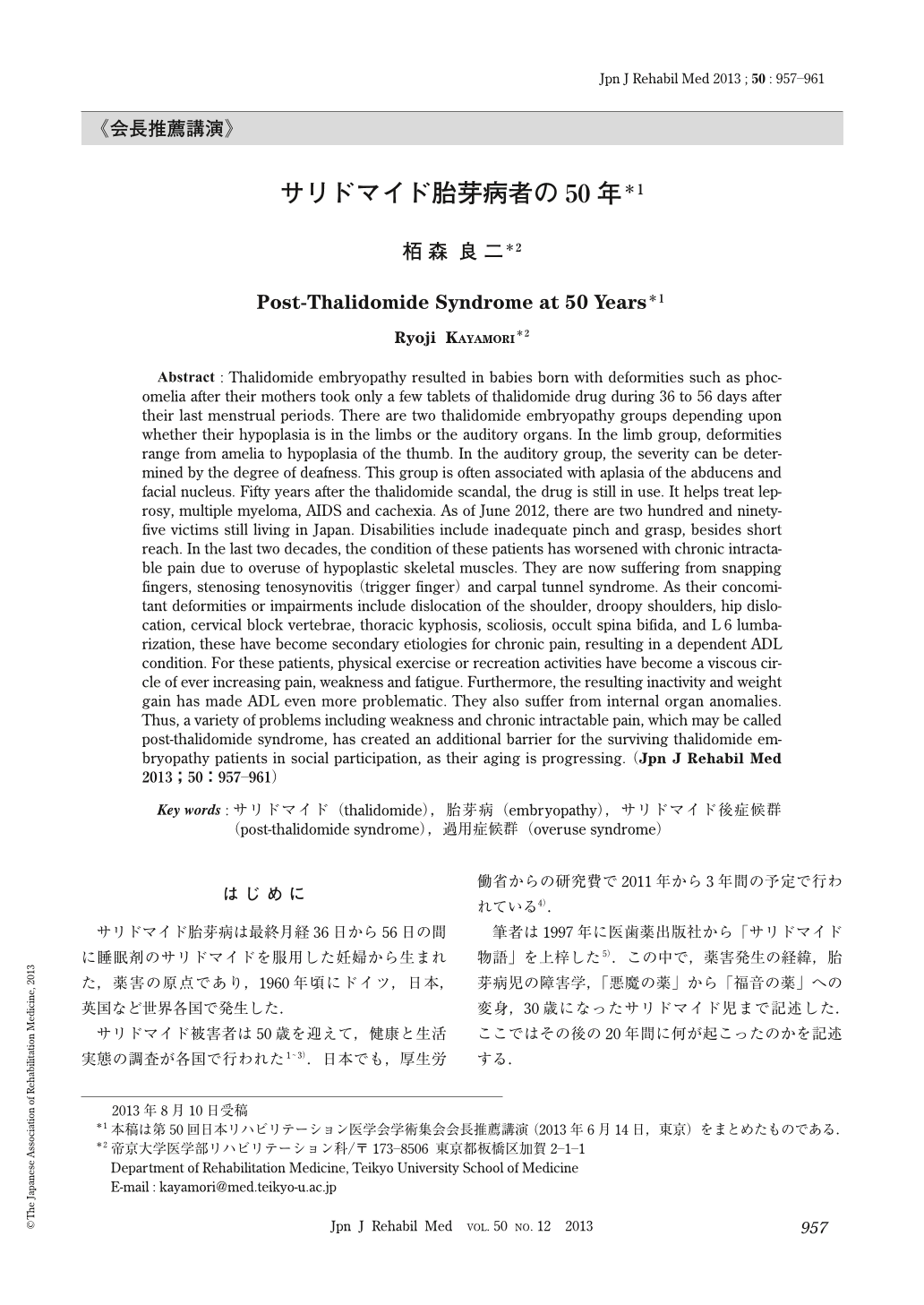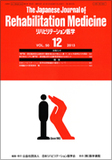Japanese
English
- 販売していません
- Abstract 文献概要
- 1ページ目 Look Inside
- 参考文献 Reference
はじめに
サリドマイド胎芽病は最終月経36日から56日の間に睡眠剤のサリドマイドを服用した妊婦から生まれた,薬害の原点であり,1960年頃にドイツ,日本,英国など世界各国で発生した.
サリドマイド被害者は50歳を迎えて,健康と生活実態の調査が各国で行われた1~3).日本でも,厚生労働省からの研究費で2011年から3年間の予定で行われている4).
筆者は1997年に医歯薬出版社から「サリドマイド物語」を上梓した5).この中で,薬害発生の経緯,胎芽病児の障害学,「悪魔の薬」から「福音の薬」への変身,30歳になったサリドマイド児まで記述した.ここではその後の20年間に何が起こったのかを記述する.
Abstract : Thalidomide embryopathy resulted in babies born with deformities such as phocomelia after their mothers took only a few tablets of thalidomide drug during 36 to 56 days after their last menstrual periods. There are two thalidomide embryopathy groups depending upon whether their hypoplasia is in the limbs or the auditory organs. In the limb group, deformities range from amelia to hypoplasia of the thumb. In the auditory group, the severity can be determined by the degree of deafness. This group is often associated with aplasia of the abducens and facial nucleus. Fifty years after the thalidomide scandal, the drug is still in use. It helps treat leprosy, multiple myeloma, AIDS and cachexia. As of June 2012, there are two hundred and ninety-five victims still living in Japan. Disabilities include inadequate pinch and grasp, besides short reach. In the last two decades, the condition of these patients has worsened with chronic intractable pain due to overuse of hypoplastic skeletal muscles. They are now suffering from snapping fingers, stenosing tenosynovitis (trigger finger) and carpal tunnel syndrome. As their concomitant deformities or impairments include dislocation of the shoulder, droopy shoulders, hip dislocation, cervical block vertebrae, thoracic kyphosis, scoliosis, occult spina bifida, and L6 lumbarization, these have become secondary etiologies for chronic pain, resulting in a dependent ADL condition. For these patients, physical exercise or recreation activities have become a viscous circle of ever increasing pain, weakness and fatigue. Furthermore, the resulting inactivity and weight gain has made ADL even more problematic. They also suffer from internal organ anomalies. Thus, a variety of problems including weakness and chronic intractable pain, which may be called post-thalidomide syndrome, has created an additional barrier for the surviving thalidomide embryopathy patients in social participation, as their aging is progressing.

Copyright © 2013, The Japanese Association of Rehabilitation Medicine. All rights reserved.


